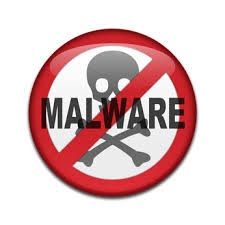New malware destroys hard drives
Posted by: Timothy Weaver on 05/06/2015 08:15 AM
[
 Comments
]
Comments
]
Rombertik, as the malware has been dubbed, is a new piece of malware that effectively avoids detection and has the ability to destroy the hard drive to avoid detection.
 In cases where the main yfoye.exe component detects the malware is under the microscope of a security researcher or rival malware writer, Rombertik will self-destruct, taking along with it the contents of a victim's hard drive.
In cases where the main yfoye.exe component detects the malware is under the microscope of a security researcher or rival malware writer, Rombertik will self-destruct, taking along with it the contents of a victim's hard drive.
In a blog post published Monday, Talos researchers Ben Baker and Alex Chiu wrote:
Once the unpacked version of Rombertik within the second copy of yfoye.exe begins executing, one last anti-analysis function is run — which turns out to be particularly nasty if the check fails. The function computes a 32-bit hash of a resource in memory, and compares it to the PE Compile Timestamp of the unpacked sample. If the resource or compile time has been altered, the malware acts destructively. It first attempts to overwrite the Master Boot Record (MBR) of PhysicalDisk0, which renders the computer inoperable. If the malware does not have permissions to overwrite the MBR, it will instead destroy all files in the user’s home folder (e.g. C:\Documents and Settings\Administrator\) by encrypting each file with a randomly generated RC4 key. After the MBR is overwritten, or the home folder has been encrypted, the computer is restarted.
The Master Boot Record starts with code that is executed before the Operating System. The overwritten MBR contains code to print out “Carbon crack attempt, failed”, then enters an infinite loop preventing the system from continuing to boot.
Effectively, Rombertik begins to behave like a wiper malware sample, trashing the user’s computer if it detects it’s being analyzed. While Talos has observed anti-analysis and anti-debugging techniques in malware samples in the past, Rombertik is unique in that it actively attempts to destroy the computer if it detects certain attributes associated with malware analysis.
Source: Arstechnica
 In cases where the main yfoye.exe component detects the malware is under the microscope of a security researcher or rival malware writer, Rombertik will self-destruct, taking along with it the contents of a victim's hard drive.
In cases where the main yfoye.exe component detects the malware is under the microscope of a security researcher or rival malware writer, Rombertik will self-destruct, taking along with it the contents of a victim's hard drive.In a blog post published Monday, Talos researchers Ben Baker and Alex Chiu wrote:
Once the unpacked version of Rombertik within the second copy of yfoye.exe begins executing, one last anti-analysis function is run — which turns out to be particularly nasty if the check fails. The function computes a 32-bit hash of a resource in memory, and compares it to the PE Compile Timestamp of the unpacked sample. If the resource or compile time has been altered, the malware acts destructively. It first attempts to overwrite the Master Boot Record (MBR) of PhysicalDisk0, which renders the computer inoperable. If the malware does not have permissions to overwrite the MBR, it will instead destroy all files in the user’s home folder (e.g. C:\Documents and Settings\Administrator\) by encrypting each file with a randomly generated RC4 key. After the MBR is overwritten, or the home folder has been encrypted, the computer is restarted.
The Master Boot Record starts with code that is executed before the Operating System. The overwritten MBR contains code to print out “Carbon crack attempt, failed”, then enters an infinite loop preventing the system from continuing to boot.
Effectively, Rombertik begins to behave like a wiper malware sample, trashing the user’s computer if it detects it’s being analyzed. While Talos has observed anti-analysis and anti-debugging techniques in malware samples in the past, Rombertik is unique in that it actively attempts to destroy the computer if it detects certain attributes associated with malware analysis.
Source: Arstechnica
Comments






